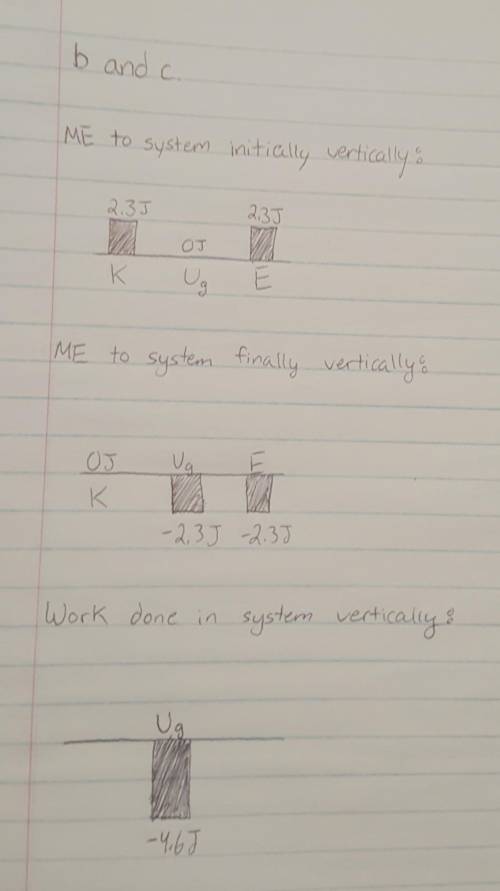
A golf ball with a mass of 46g is hit from the ground with a speed of 20m/s. It takes that ball 1 second to reach its highest point. For all parts assume that the air resistance is negligible. The system includes the golf stick, golf ball, and Earth. I created an energy bar chart attached below. The part where I'm getting stuck is figuring out what is doing the negative work. At first I thought it was the Earth but it can't be because it is part of the system. Then I started doubting my energy bar chart. The final Ug would be mgh so I did m=0.046(covert from g to kg), g=-10, and h=5(figured out using kinematics). The Ug would then be -2.3. But wouldn't it have to be positive 2.3 for energy to be conserved? But at the same time, how can it be positive; g is always negative? So please clear up this problem, I've been stressing on it too much.


Answers: 1
Another question on Physics

Physics, 21.06.2019 18:50
How does the image distance (di) of a convex lens compare with the image distance of a concave lens? a. the image distance of the convex lens is positive, and that of the concave lens is negative. b. both are negative for a virtual image. c. both are positive for a virtual image d. the image distance of the convex lens is negative, and that of the concave lens is positive.
Answers: 1

Physics, 21.06.2019 22:00
In a wind tunnel the speed changes as the cross sectional area of the tunnel changes. if the speed in a 6' x 6' square test section is 100 mph, what was the speed upstream of the test section where the tunnel measured 20' x 20'? use conservation of mass and assume incompressible flow. conservation of mass requires that as the flow moves through a path or a duct the product of the density, velocity and cross sectional area must remain constant; i.e., that ova-constant. a model is being tested in a wind tunnel at a speed of 100 mph if the flow in the test section is at sea level standard conditions, what is the pressure at the model's stagnation point? (a) the tunnel speed is being measured by a pitot-static tube connected to a u- tube manometer. what is the reading on that manometer in inches of water? (b) at one point on the model a pressure of 2058 psf is measured. what is the local airspeed at that point?
Answers: 2

Physics, 22.06.2019 00:00
How do the measurements of charge at the different locations on the sphere compare to each other? the charge measurements are different at all locations on the sphere. the charge measurements are virtually not the same at all locations on the sphere except for the charge at the very top and at the very bottom that are equal. the charge measurements are virtually the same at all locations on the sphere except for the charge at the very top. at the top, the conductive sphere has a small disk that is made of different material. the charge measurements are the same at all locations on the sphere. what happens to the charge on the conductive sphere when it is connected to a source of charge such as the electrostatic voltage source? nothing will happen because no charge goes around the surface of the sphere. the charge on the conductive sphere spreads out over the surface of the sphere; being greater in some specific locations on the sphere. the charge on the conductive sphere spreads out uniformly over the surface of the sphere. the charge on the conductive sphere spreads out non-uniformly over the surface of the sphere.
Answers: 3

Physics, 22.06.2019 07:40
Astudent creates a model of a closed ecosystem by filling a glass tank half full with water, then adding 10 snails and two small aquatic plants. the next day, all the snails are dead. what is the most likely cause of their death?
Answers: 3
You know the right answer?
A golf ball with a mass of 46g is hit from the ground with a speed of 20m/s. It takes that ball 1 se...
Questions






















